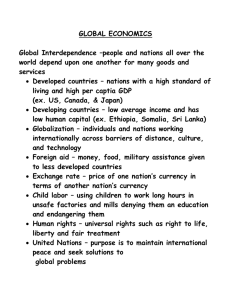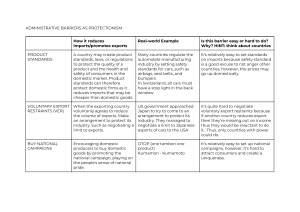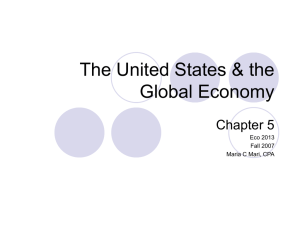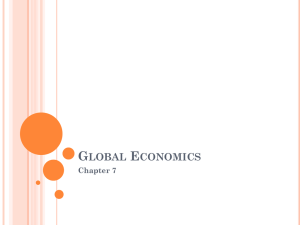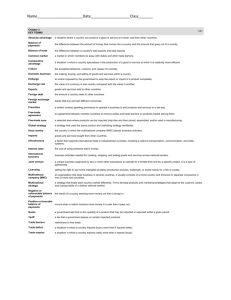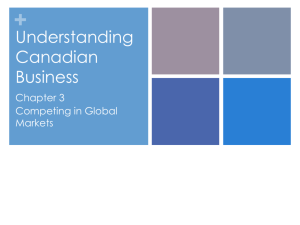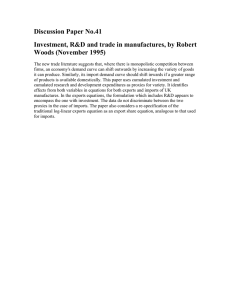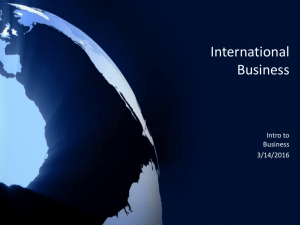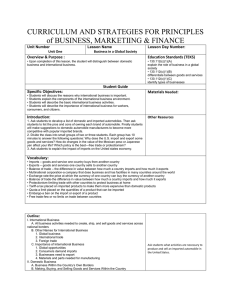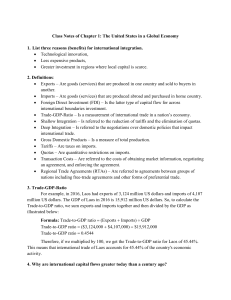Market vs. Command Economies & International Trade
advertisement
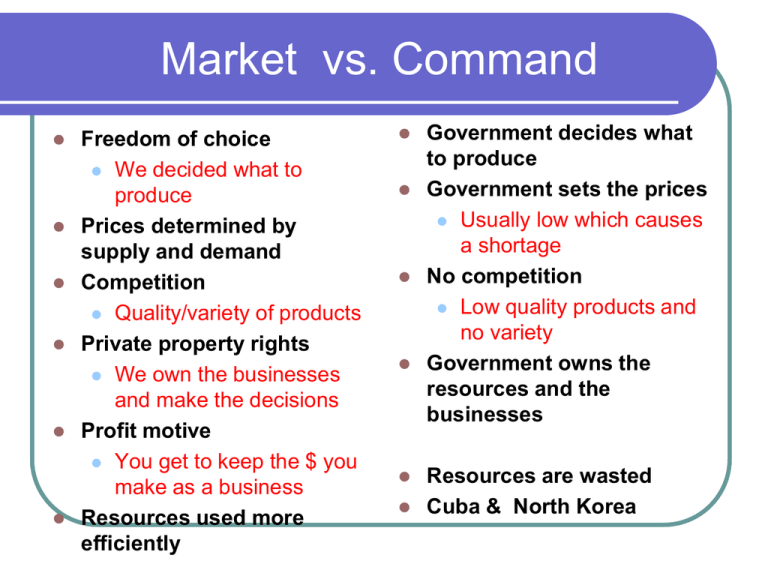
Market vs. Command Freedom of choice We decided what to produce Prices determined by supply and demand Competition Quality/variety of products Private property rights We own the businesses and make the decisions Profit motive You get to keep the $ you make as a business Resources used more efficiently Government decides what to produce Government sets the prices Usually low which causes a shortage No competition Low quality products and no variety Government owns the resources and the businesses Resources are wasted Cuba & North Korea Mixed A combination of market and command Individual freedoms AND government intervention United States, China, and many others many countries have some version of a mixed economy. Pure market economies really don’t exist as no market has total freedom from government involvement International Trade 26.1 Why Do Nations Trade? Countries do not produce everything they need, so they import (purchase goods from other countries) to get what they need. They also export (sell goods to other countries) so other countries have what they need Trade is a way to solve the problem of scarcity Comparative Advantage This is the ability of a country to produce a good at a lower cost than another country can. This allows countries to specialize in producing what they are good at! They then keep what they need and export the rest to other countries Restrictions Tariffs (a tax on an imported good) are used to decrease imports into a country to protect their own product and sale of a good. Quotas (a limit on the amount of goods that can be imported) are also used to block imports. Free Trade Free Trade is designed to help countries trade without tariffs, quotas, or other restrictions. Which makes trade easier. Free Trade NAFTA: North American Free Trade Agreement WTO: World Trade Organization Free trade between Canada, U.S., and Mexico Oversees trade among nations EU: European Union European Nations that have no trade barriers between them Goods, services, and even workers move freely between the nations Common currency- Euro Financing Trade Balance of trade is when a countries imports equals its exports. They break even! Trade Surplus is when a countries exports are greater than it’s imports. They sold more than they bought! Trade Deficit is when a countries imports are greater than their exports. They bought more than they sold! Work Time Finish your vocab. 23.1, 23.2, 26.1, 26.2 Finish your Test study Guide. Test Friday! Use this time to study!
